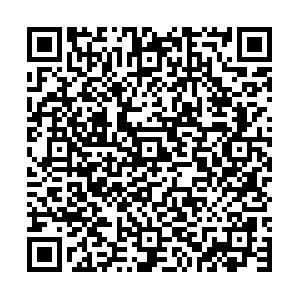Intelligent rock mass RQD computation based on deep learning and borehole imagery
-
摘要: 【目的】岩石质量指标(RQD)是岩土工程中公认的并广泛运用的反映岩石完整性的重要指标,常用于岩石质量分类,同时也是评级系统的重要输入参数。传统的RQD确定方法依赖于人工岩芯测井,但该方法通常费时费力,且易受钻进工艺、取芯质量的影响,往往不能客观获得RQD值。鉴于此,【方法】本研究提出了一种新方法,该方法基于深度学习算法YOLOv5(You Only Look Once version 5),无需采集岩芯,能够直接从钻孔井下电视获得的原位钻孔图像中自动识别和定位结构面,从而避免岩芯取样过程中的破坏性影响,并实现RQD的智能计算。该方法首先对钻孔原始图像进行预处理构建一个具有代表性的数据集,然后采用深度学习算法训练模型,最后结合图像分析方法自动计算RQD。为了验证该方法的准确性,本研究选取了位于中国湖南省永州市某隧道工程为例。通过对比zk4钻孔得到的RQD智能计算值和RQD人工测量值,【结果】发现根据钻孔图像智能计算的RQD值相较现场人工对于岩芯盒的实测值平均偏高20%,平均绝对误差为9.82%。【结论】证明该方法能够避免钻进和取芯过程对实际RQD造成的影响,提高了RQD数据的准确性,体现了其卓越的可靠性和有效性。Abstract: [Purpose] Rock Quality Designation (RQD) serves as a fundamental index in geotechnical engineering for evaluating rock mass integrity. It is extensively applied in rock mass classification systems and serves as a critical input parameter for various engineering rating methods. Conventionally, RQD determination relies on manual logging of recovered drill cores. However, this approach is labor-intensive, time-consuming, and often sensitive to drilling techniques and core quality. Such dependencies introduce subjectivity and potential inconsistencies, ultimately limiting the objectivity and repeatability of RQD evaluation.[Method] In light of these challenges, this study proposes an innovative, non destructive approach utilizing deep learning. We adopt the YOLOv5 (You Only Look Once, version 5) framework to detect and localize discontinuities directly from borehole televiewer images, thereby eliminating the need for physical core extraction. First, raw televiewer imagery is preprocessed, annotated, and augmented to build a representative dataset that highlights natural fractures, bedding planes, and other geological discontinuities. Next, a YOLOv5 detector is trained on this dataset to recognize and segment discontinuities with high spatial accuracy. Finally, the model output is post-processed to compute RQD automatically, by quantifying the proportion of continuous rock segments exceeding the standard 10?cm threshold.[Results] To assess the method’s performance, a case study was conducted on borehole zk4, part of a tunnel project in Yongzhou City, Hunan Province, China. Intelligent RQD values derived from the televiewer images were compared with conventional RQD measurements obtained from core boxes in the field. The results indicate that the automated approach tends to overestimate RQD by around 20?% relative to manual measurements, with a mean absolute error of 9.82?%. Despite this systematic bias, the spatial trend of RQD variation identified by the intelligent method closely matches that of in-situ wave velocity profiles, suggesting that the technique accurately captures relative changes in rock mass properties along the borehole.[Conclusion] Overall, the proposed YOLOv5 based workflow effectively reduces the influence of drilling-induced biases and core extraction artifacts on RQD estimation. By enabling rapid, repeatable, and objective computation of RQD directly from borehole images, the method enhances both efficiency and reliability of rock quality assessment. Future work will explore calibration strategies to adjust for systematic deviations and integration with complementary geophysical datasets. This approach demonstrates significant potential to digitalize geotechnical investigation processes, streamline tunnel engineering workflows, and advance rock mass characterization in a more robust and data-driven manner.
-
Key words:
- rock mass quality /
- RQD /
- borehole televiewer imagery /
- deep learning /
- YOLO /
- intelligent computation
-

 点击查看大图
点击查看大图
计量
- 文章访问数: 250
- PDF下载量: 18
- 被引次数: 0




 下载:
下载:

